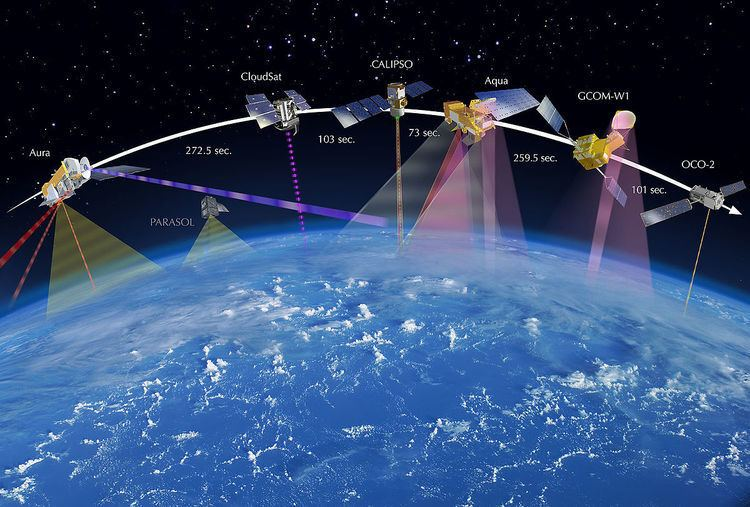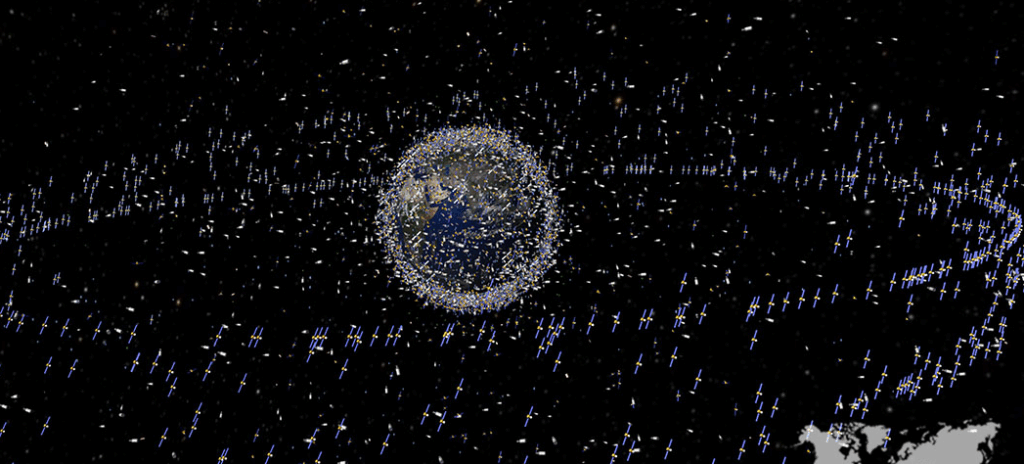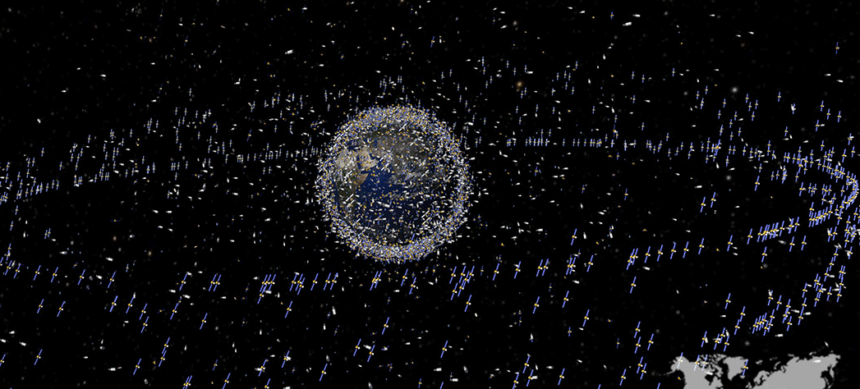I will cover the How Many Satellites Orbit Earth over time. Truly satellites are an indispensable part of life, used in communication, navigation, weather monitoring, and scientific research.
With thousands of satellites in orbit and countless more planned for launch, the breadth and purpose of these orbiting satellites illustrates the scale of expansion in space technology.
What Are Satellites?
A satellite is an object that rotates around a larger body such as a planet. A satellite can be a natural formation such as a moon, or it can be an artificial structure. Artificial satellites are engineered devices created to be launched into space for numerous purposes such as communication, forecasting, weather patterns, navigation, military reconnaissance, and satellites used for other scientific purposes.

Artificial satellites are in different orbits and can be in a low, medium, or even in a geostationary orbit which is dependent on the satellites purpose. Artificial satellites can be huge, complex machines or tiny Cubesat devices, that are used for multi-functional purposes.
These satellites serve an important function to a civilization by providing geospatial monitoring and communication globally, navigation assistance, environmental assessments, and contributing to further advanced space exploration.
How Many Satellites Orbit Earth

As of March 2025, the count of satellites surrounding the Earth stood at 14,904, which was 31.5% higher than the figure recorded in June 2023.
Assessing the precise numbers at any given moment is problematic due to the numerous new satellites being launched, as well as those which are being deorbited or burned in the atmosphere, like certain Starlink satellites.
The oldest operational satellite which is still in orbit is the USA’s VANGUARD 1 launched on March 17, 1958.
Not every launched satellite remains around the Earth; some go beyond to orbit the Moon, the Sun, as well as other celestial bodies. UNOOSA reports that at the moment, there are 111 satellites in orbit around bodies other than Earth.
Total Number of Satellites in 2025
| Category | Number of Satellites | Notes |
|---|---|---|
| Total Satellites Launched | 14,904 | Total satellites launched into orbit by March 2025 |
| Active Satellites | ~7,500–8,000 | Currently operational and functioning |
| Inactive Satellites / Space Debris | ~6,400–7,000 | Non-functional satellites still in orbit |
| Satellites Orbiting Other Bodies | 111 | Orbiting Moon, Sun, or other planets |
| Oldest Satellite | 1 | VANGUARD 1, launched March 17, 1958 |
| Percentage Increase Since 2023 | 31.54% | Significant growth due to new satellite launches |
Satellite Orbits and Classifications
Here’s a detailed explanation of the different types of orbits and their classifications:
Low Earth Orbit (LEO)
- Altitude: 160-2,000 km above Earth
- Common Uses: Earth observation; scientific research; some communication satellites, like Starlink
- Advantage: Decreased latency and more favorable launch conditions
- Disadvantage: Limited area covered; more satellites needed for global coverage
Medium Earth Orbit (MEO)
- Altitude: 2,000-35,786 km
- Common Uses: Satellites for navigation such as GPS, Galileo, and GLONASS
- Advantage: Broader coverage than LEO
- Disadvantage: Higher latency than LEO
Geostationary Orbit (GEO
- Altitude: ~35,786 km above the equator
- Common Uses: Weather observation; TV broadcasting; communication satellites
- Advantage: Provides unbroken coverage to the same area on Earth
- Disadvantage: High launch cost; high signal delay
Highly Elliptical Orbit (HEO)
- Altitude: Varies, with a long, elliptical path
- Common Uses: Polar communications; monitoring the high latitude regions of Earth
- Advantage: Lingers over particular regions for an extended time
- Disadvantage: Complicated signal mechanics; more complex orbit pathways
Applications of Satellites
Almost every day life and system satellite touches is fundamental:
Communication: Broadcast Radio, Television and access the internet from any part of the world.
Navigation: Provide GPS for transportation, logistics and personal use systems.
Weather and climate monitoring: Provide data for predicting climate forecasts, for environmental research and managing natural disasters.
Scientific research and exploration: Assist with research and space missions, conduct astronomical experiments.
Military and defense: Conduct surveillance and reconnaissance, classified communication.
Earth Observation: Monitor agricultural, urban, natural resources, and the environment.
Challenges and Concerns
Let us take a brief overview on the Challenges and Concerns of Satellites.
Space Debris: Orbit collision poses a threat due to non-operational satellites and fragments.
Orbital Congestion: More and more satellites are being developed and deployed which increases the amount of overcrowding in popular orbits.
Collision Risks: Satellites that are active, as well as space crafts are at risk due to additional debris created from high-speed collisions.
Regulatory Issues: Satellite launches, the management of allocating certain frequence, as well as space traffic, require international coordination.
Environmental Impact: Contributing to over pollution and launching satellites as well as the deorbiting processes are needed to be addressed.
Security Concerns: Satellites can be hacked, abused, or used against anti-satellite weaponry.
The Future of Satellites
Future satellites are predicted to expand and innovate thanks to technology and increases in global demand for connection.
Small satellites mega constellations are uplinked to the satellites to offer high internet speed around the world. More complex satellites are still in development and their advancements are centered around better climate monitoring and managing other resources in times of disaster.
AI and miniaturization technology inventions are going to make satellites better in complex and needful tasks.
For clearer satellites that follow international protocols, better inter-satellite traffic management systems are required. The role of satellites in communication, science satellites and global connection still remains important.
Conclusion
To wrap things up, the amount of satellites around the Earth skyrocketed, it’s predicted that by 2025 this number could reach almost 15,000, thousands of which actively aid in communication, navigation, weather, research, and defense in the world.
This increase is used due to the advancements in technology and the growth of privately owned businesses which constantly seek to provide the world with Public satellites. There is no question that satellites bring with them numerous advantage, however, things such as orbiting debris, international space, and proper supervision pose major challenges.
For the future, design and international collaboration will be needed to miniaturize the satellites while maintaining their importance in scientific research and ever growing infrastructure around the world.
FAQ
How many satellites are currently orbiting Earth?
As of 2025, there are approximately 14,904 satellites in orbit, with around 7,500–8,000 active and the rest inactive or space debris.
Which country has the most satellites in orbit?
The United States leads in the number of satellites, followed by China, Russia, and European countries. Private companies like SpaceX also contribute significantly.
What challenges do satellites face in orbit?
Challenges include space debris, orbital congestion, collision risks, regulatory issues, and security threats.
Are all satellites orbiting Earth?
No, some satellites orbit the Moon, Sun, or other celestial bodies, with around 111 satellites currently orbiting non-Earth objects.














